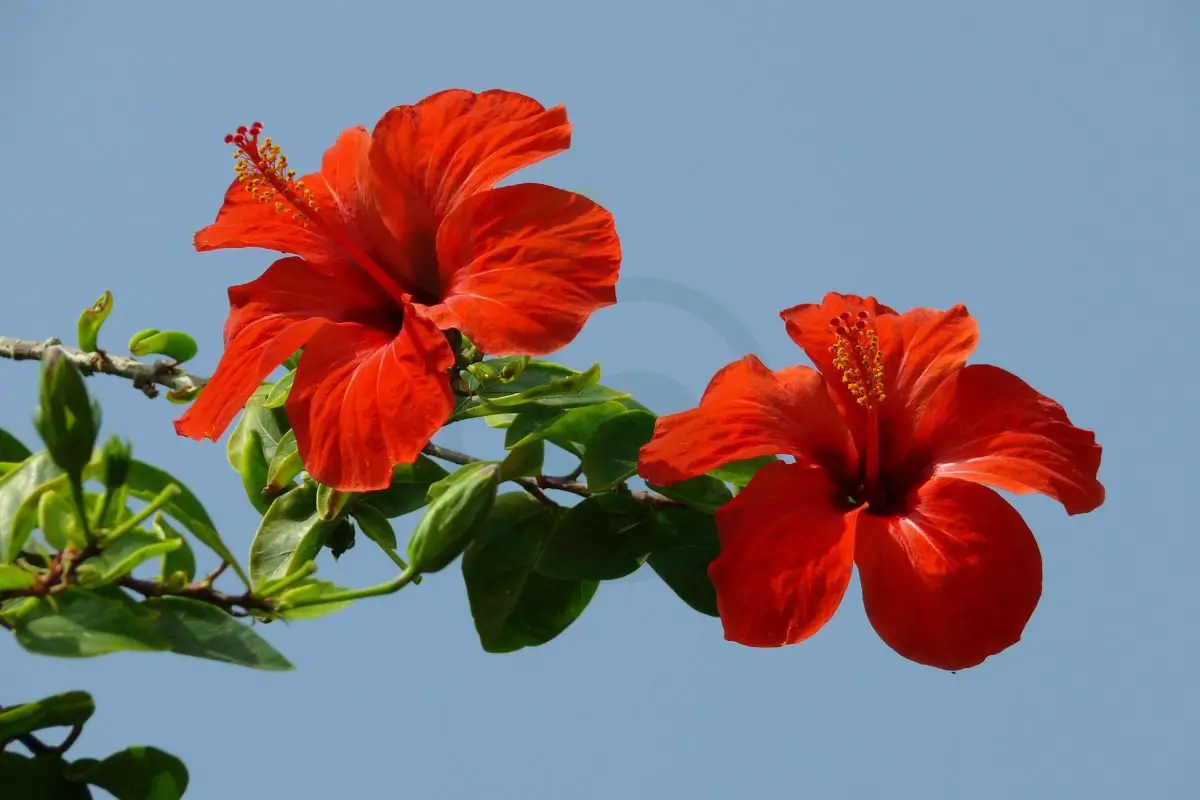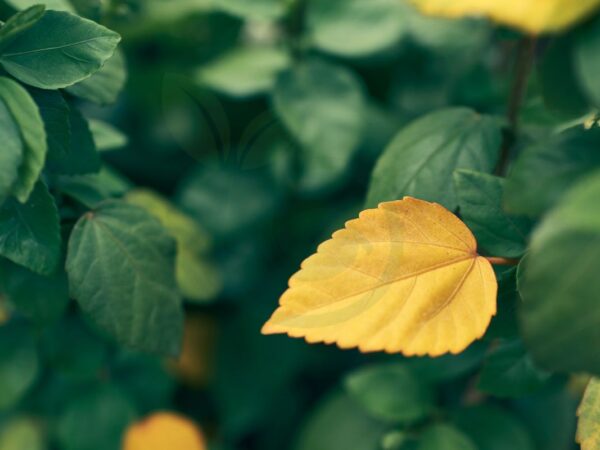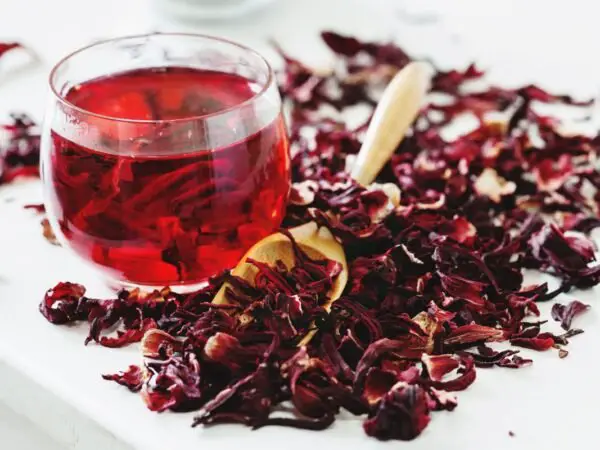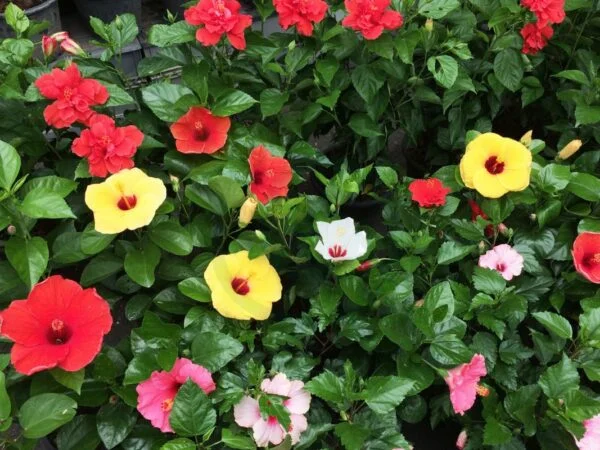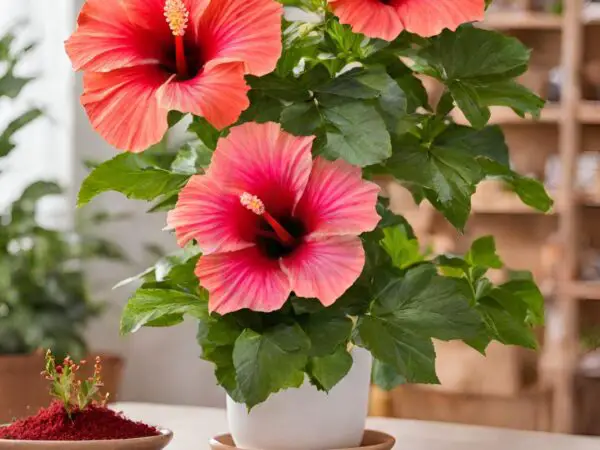Are you wondering how much direct sunlight hibiscus plants require for healthy growth and planting? Understanding the sunlight needs of your hibiscus is crucial for their well-being and blooming potential.
To thrive, hibiscus plants typically need at least 6-8 hours of direct sunlight daily. However, they can also tolerate partial shade, especially in hot climates. Finding the right balance of sunlight is key to ensuring vibrant blooms and lush foliage on your hibiscus plants.
Curious to learn more about optimizing sunlight exposure for your hibiscus plants? Stay tuned as we delve deeper into the ideal sun requirements, including direct sunlight and PAR, and best practices to help your hibiscus flourish under the sun.
Key Takeaways
- Provide Adequate Sunlight: Hibiscus plants need at least 6 hours of sunlight daily for optimal growth and blooming.
- Tailor Care to hibiscus Type: Understand the specific needs of your hibiscus variety to provide appropriate care.
- Beware of Sun Overexposure: Excessive sun exposure can lead to leaf scorching and plant stress, so monitor and adjust sunlight levels accordingly.
- Maintain Proper Watering: Water hibiscus plants deeply but allow the soil to dry slightly between waterings to prevent root rot.
- Feed Strategically: Use a balanced fertilizer to promote healthy growth, applying it during the growing season as directed.
- Prune Regularly: Trim hibiscus plants to encourage new growth, remove dead or damaged branches, and shape the plant for better aesthetics.
Hibiscus Sunlight Needs
Optimal Sunlight
Hibiscus plants require a minimum of 6 hours of direct sun daily for their optimal growth. Placing them in locations with full sun exposure, preferably direct sunlight, is crucial for them to thrive. Monitoring sunlight levels ensures that hibiscus plants receive the necessary light.
Types of Sunlight
Understanding the difference between full sun and partial shade is essential for hibiscus plants. In extremely hot climates, providing some shade during the hottest part of the day can be beneficial. Choosing the right sunlight type based on your hibiscus plant's specific needs is key.
Sunlight vs. Temperature
Sunlight exposure directly impacts hibiscus plants' temperature tolerance. It's important to adjust sunlight exposure based on temperature variations to protect these plants. Monitoring temperature changes and sunlight levels is crucial to maintaining the health of hibiscus plants.
Understanding Hibiscus Types
Tropical Hibiscus
Tropical hibiscus plants require ample sunlight, ideally 6-8 hours daily, to thrive and bloom vibrantly. These plants also prefer temperatures above 60°F, making them ideal for warm climates. Compared to other hibiscus varieties, tropical hibiscus needs consistent moisture in well-draining soil. To care for them effectively, ensure they receive indirect sunlight to prevent scorching their delicate leaves.
When caring for tropical hibiscus, it's crucial to understand their sensitivity to cold temperatures. During winter months, consider bringing them indoors or providing adequate protection from frost. Regular pruning promotes healthy growth and abundant flowering. Fertilize these plants regularly with a balanced fertilizer to support their nutrient needs and overall health.
Other Varieties
Apart from tropical hibiscus, there is a wide array of hibiscus plant varieties with varying sunlight requirements. For instance, hardy perennial hibiscus can withstand colder temperatures and thrive in full sun conditions. On the other hand, swamp rose mallow prefers partial shade and moist soil.
Each hibiscus variety has specific sunlight needs that directly impact their growth and blooming patterns. For example, rose of Sharon thrives in full sun but can tolerate partial shade as well. Tailoring your care routine according to the unique requirements of each hibiscus variety ensures optimal growth and flower production.
To cater to the diverse sunlight needs of different hibiscus varieties, consider planting them in locations that match their preferences. Regularly monitor the amount of sunlight they receive throughout the day to ensure they meet their requirements. Adjust watering schedules accordingly based on the exposure to sunlight and environmental conditions.
Effects of Excessive Sun
Sunburn Issues
Recognize the signs of sunburn on hibiscus plants. Look for brown, crispy edges on leaves and wilting foliage. Implement preventive measures such as providing shade during peak sunlight hours. Ensure proper watering to maintain plant health. Take action promptly if sunburn occurs to minimize damage to hibiscus plants.
Prevention Tips
Implement effective strategies to prevent sun-related issues in hibiscus plants. Monitor sunlight exposure regularly by observing the plant's behavior and adjusting its location accordingly. Consider using shade cloth or moving the plant to a shadier spot if necessary. Adjust care routines based on prevention tips to ensure hibiscus plants remain healthy.
Watering Hibiscus Plants
Frequency
To determine the appropriate frequency for watering hibiscus plants, consider factors like pot size, plant size, and environmental conditions. Adjust watering based on these variables to prevent overwatering or underwatering. Monitor soil moisture levels regularly to establish a suitable watering schedule for optimal growth.
Best Practices
Follow best practices for watering, fertilizing, and pruning hibiscus plants to promote healthy growth. Incorporate optimal sunlight exposure into your care routine to ensure vibrant blooms. Implement a holistic approach by considering all aspects of care to maintain the overall well-being of your hibiscus plants.
Fertilizing for Growth
Fertilizer Types
When caring for hibiscus plants, select a general-purpose fertilizer designed for potted plants. Opt for time-release fertilizers to provide consistent nutrients over an extended period.
- Choose a general-purpose fertilizer labeled for potted plants.
- Opt for time-release fertilizers for long-lasting nutrient supply.
Application Timing
For optimal growth, apply fertilizer to hibiscus plants at the right time. Incorporate fertilizer application into your regular care routine following packaging instructions.
- Understand the ideal timing for applying fertilizer.
- Follow instructions on packaging for proper application timing.
Pruning Techniques
When to Prune
Pruning hibiscus plants is essential to ensure their health and vitality throughout the year. Identify the appropriate times for pruning, which typically occur in late winter or early spring. This timing allows the plants to recover and flourish during the growing season. Determine the pruning schedule based on the growth stage of hibiscus plants; for instance, young plants may require more frequent pruning to shape them properly. Plan your pruning activities strategically to promote healthy growth and abundant flowering in your hibiscus plants.
How to Prune
To prune hibiscus plants effectively, learn the correct techniques that will benefit their overall well-being. Understand the impact of pruning on hibiscus plant growth and flowering; proper pruning encourages new growth and stimulates flower production. Practice proper pruning methods by using sharp, clean tools to avoid damaging the plant. Regular maintenance through pruning helps maintain the desired shape and promotes air circulation within the plant, reducing the risk of diseases.
Seasonal Care Guide
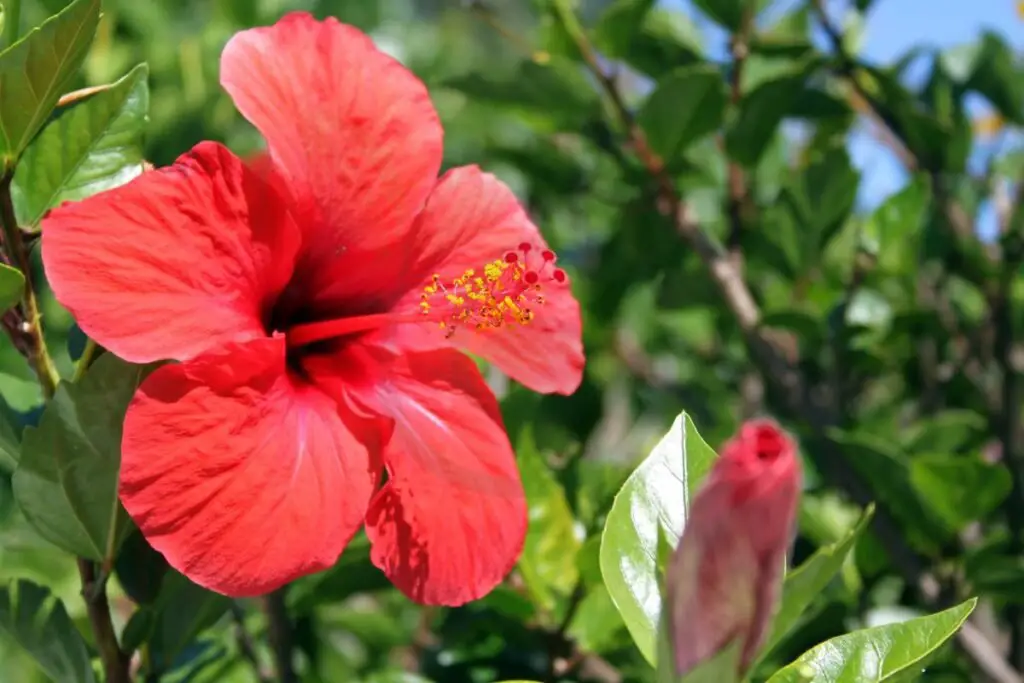
Summer Care
Adjust care routines during summer to meet hibiscus plants' needs. Ensure adequate sunlight exposure for optimal growth. Monitor temperature levels regularly to prevent stress in hibiscus plants. Implement summer care practices such as regular watering and fertilizing to promote healthy growth and blooming.
During the summer, it's essential to keep a close eye on your hibiscus plants' well-being. Excessive heat can be detrimental, so provide shade if needed. Mulching around the base helps retain moisture and regulate soil temperature. Prune any damaged or dead branches to encourage new growth.
Winter Protection
Prepare hibiscus plants for winter by implementing protective measures against cold temperatures. Shield your plants from frost by covering them with blankets or moving them indoors if possible. Adjust care routines during winter by reducing watering frequency and avoiding fertilization to help hibiscus plants survive the colder months.
As winter approaches, consider insulating the roots with mulch to protect them from freezing temperatures. Trim back any overgrown branches but avoid heavy pruning during this time. Keep an eye out for signs of stress such as yellowing leaves, which may indicate inadequate light or water.
Hibiscus Health Monitoring
Signs of Stress
Hibiscus plants exhibit common signs when under stress, such as yellowing leaves or stunted growth. Look for wilting or drooping leaves, which indicate insufficient water intake. Pest infestations can also stress hibiscus plants, leading to damaged foliage.
Monitor your hibiscus plants for symptoms of stress caused by environmental factors like extreme temperatures or inadequate sunlight. Check for mold growth on the soil surface, a sign of overwatering. Leaf discoloration may signal nutrient deficiencies that stress the plant.
Take immediate action upon identifying stress signs to prevent further damage to your hibiscus plants. Adjust watering schedules if necessary and consider repotting if root-bound. Prune damaged or diseased parts to promote new growth and overall plant health.
Recovery Tips
To help hibiscus plants recover from stress or damage, implement effective strategies like adjusting watering frequency and ensuring proper drainage. Consider relocating the plant to a spot with better sunlight exposure if it shows signs of light deficiency.
Provide optimal care and conditions to support the recovery process of stressed hibiscus plants. Use a balanced fertilizer to replenish essential nutrients and promote new growth. Regularly inspect the plant for any recurring signs of stress.
Monitor the progress of your hibiscus plants' recovery and adjust care routines as needed. Be patient during the recovery period, as it may take time for the plant to fully bounce back. Consider using organic remedies like neem oil for pest control without harming the plant.
Enhancing Blooming
Stimulating Flowers
Pruning and fertilizing are key methods to stimulate flower production in hibiscus plants. These practices help in promoting healthy growth and abundant blooms. By trimming dead or overgrown branches, you direct the plant's energy towards new flower buds. Fertilizing with a balanced formula rich in potassium can boost flowering.
Creating an optimal environment is essential for encouraging blooming in hibiscus plants. Adequate sunlight exposure, typically around six hours per day, is crucial for robust flower development. Ensure the plant receives enough light without being exposed to harsh midday sun. Proper watering and well-draining soil also play vital roles in promoting blooms.
Maintaining Vibrancy
To maintain the vibrancy of hibiscus plants, consistent care practices are essential. Regularly monitor the amount of sunlight your plant receives; insufficient or excessive sunlight can impact its overall health and flowering capacity. Adjust the location if needed to ensure adequate light exposure for vibrant blooms.
Proper watering and fertilization are critical aspects of maintaining hibiscus plants' vibrancy. Water deeply but infrequently to prevent waterlogged soil, which can lead to root rot. Fertilize regularly during the growing season with a balanced fertilizer to provide essential nutrients for healthy growth and vibrant flowers.
Implementing a routine maintenance schedule is crucial for ensuring that hibiscus plants remain healthy and vibrant throughout the blooming season. Prune as needed to remove spent flowers and encourage new growth. Regularly check for pests and diseases, addressing any issues promptly to prevent them from affecting the plant's vitality.
Summary
Understanding the sunlight needs of your hibiscus plants, recognizing the different types, and managing their care throughout the seasons are vital for their health and blooming. Overexposure to the sun can harm them, while proper watering, fertilizing, and pruning techniques can enhance their growth. Regular monitoring is essential to catch any health issues early on.
To ensure your hibiscus thrives, remember to adjust sunlight exposure based on its type, maintain a consistent watering schedule, feed it appropriately, and prune strategically. By following these guidelines and staying attentive to its needs, you can enjoy vibrant blooms and a healthy plant all year round. Share your newfound knowledge with fellow gardeners to spread the joy of caring for these beautiful flowers.
Frequently Asked Questions
How much sunlight do hibiscus plants need?
Hibiscus plants need at least 6 hours of sunlight daily to thrive. However, in hot climates, they benefit from partial shade during the hottest part of the day to prevent scorching.
Should I be concerned about excessive sun exposure for my hibiscus plants?
Excessive sun exposure can lead to leaf burn and dehydration in hibiscus plants. It's crucial to monitor your plant for signs of stress such as wilting or yellowing leaves and provide shade during peak sun hours if needed.
How often should I water my hibiscus plants?
Water your hibiscus plants when the top inch of soil feels dry. Typically, they require watering every 2-3 days in warm weather but adjust based on humidity levels. Ensure proper drainage to prevent root rot.
When and how should I fertilize my hibiscus plants for optimal growth?
Fertilize your hibiscus plants monthly during the growing season with a balanced fertilizer high in potassium. Apply according to package instructions, typically diluting in water before feeding your plant for best results.
What are some tips for enhancing blooming in my hibiscus plants?
To enhance blooming, deadhead spent flowers regularly, provide adequate sunlight, maintain consistent watering practices, and fertilize appropriately. Pruning after each flowering cycle can also encourage new growth and more blooms on your hibiscus plant.
Image Source: Paid image from CANVA

